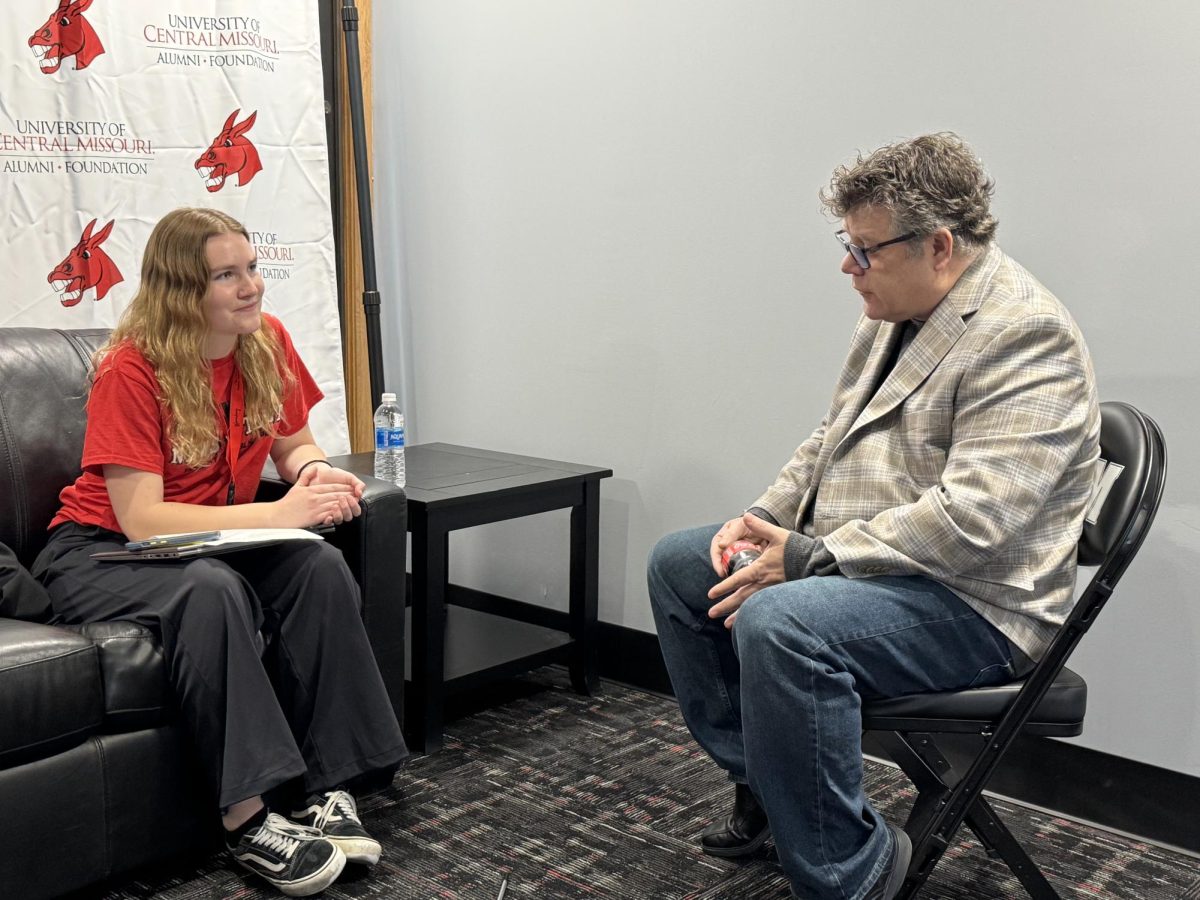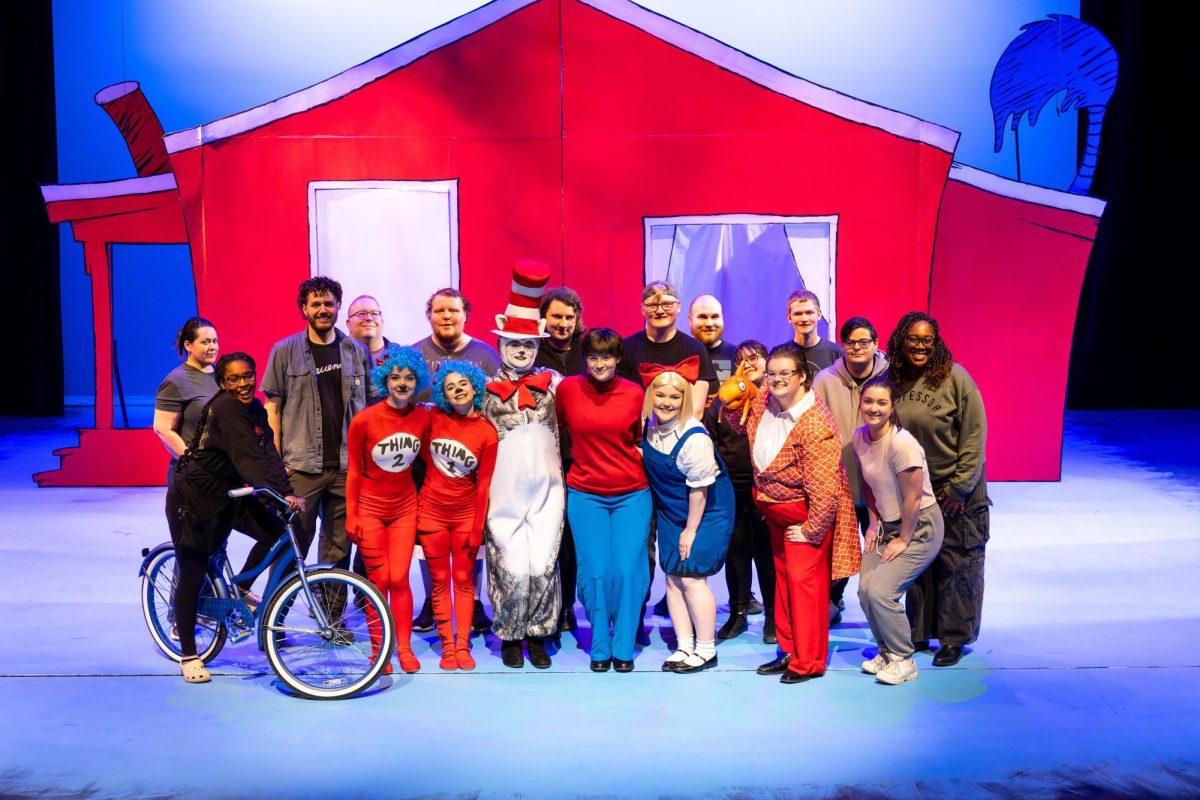Students live in Warrensburg during the school year while they’re trying to finish their degrees. Some stay for a couple of more years to go to grad school, and some even find jobs here and end up living in the ‘Burg for several years. But how well do they actually know the town of Warrensburg, Missouri?
Turns out, Warrensburg has a rich history that many students don’t take the time to learn while they’re living here. What are some things that make Warrensburg the town that it is?
The Old Courthouse
Mike Shaw, the curator and administrator of the Johnson County Historical Society, said the oldest courthouse in Warrensburg was built sometime between 1838 and 1841 and is two stories tall.
Shaw also said the building was originally built using sun-dried bricks, and then the county stuccoed it in the late 1860s.
“It didn’t weather very well, so the county stuccoed it in the late 1860s, and it’s been stuccoed ever since. That’s why you don’t see the bricks,” Shaw said.
The courthouse was sold in 1875 and was turned into a home. When the county bought it back, they redesigned it to look like the old courthouse using the original blueprints.
The courthouse is most predominantly famous for housing the Old Drum trial where a man was taken to court for killing a dog that was harming his sheep. The lawyer representing the dog’s owner called dogs the best friend of man, and that’s where the famous saying “man’s best friend” comes from.
The Railroad Coming Through
Before 1865, the railroad didn’t go through Warrensburg. The railroad was finally extended through Warrensburg in 1865 and completed to Centerview, Holden and Kingsville. It made its way to Kansas City in the following fall.
Old town Warrensburg was significantly smaller, and the railroad allowed the town to grow east, shifting the downtown area to its current location where the train depot is also located.
“A man could ride into town, buy a winter’s supply of staples, get his horse shoed, purchase a bottle of whiskey, get thrown into jail, consult a lawyer and pay a fine without ever having to step foot outside the public square,” Lillian Akers wrote in “A Sketch of ‘Old Town’ Warrensburg.”
Grasshoppers
According to “Early History of Warrensburg,” written by Mary L. Rainey, there was a plague of grasshoppers that took over the town and countryside in 1875. The grasshoppers ate everything green they could find and then filled the ground with their eggs, which would hatch the following spring. The grasshoppers also made dense swarms that would stall trains in low places.
Rainey’s book said the grasshopper infestation ended up costing Johnson County about a million dollars.
An entomologist named Charles Riley came to town and hired boys to bring him buckets of the insects. He and some friends started cooking them in soups and cakes and baked locusts with honey. Apparently, it takes 500 grasshoppers to make one cup of meat.
The Zero-Turn Mower
Most people have heard that the saying “A man’s best friend is his dog” comes from the famous Old Drum court case out of Warrensburg, but did you know that the first zero-turn mower was also invented in Warrensburg?
Max Swisher, the same man who donated the money to create of the Max B. Swisher Airport, made a mower that utilized the front wheel as the drive wheel that could also turn 360 degrees.
Shaw said Swisher took this idea to his boss but didn’t quite get the reaction he was looking for.
“He took the plan to Mr. Goodall and he said he didn’t want to sell a mower to a man who was so lazy he had to ride it,” Shaw said.
Swisher ended up selling the patent to Hesston, which became Excel Industries in years to come.
The First Newspaper
The first newspaper produced in Warrensburg was a handwritten paper called the Warrensburg Clipper published by a man named William Stephenson, but everyone called him Uncle Billy.
“Early History of Warrensburg” said Uncle Billy would charge 25 cents for an advertisement in the Warrensburg Clipper, but there was a firm in town, Pinkston and Calhoon, that didn’t like the 25-cent fee. Uncle Billy noticed this and decided to give them a free advertisement in his next issue of the paper.
Rainey said the free advertisement was a drawing of a man vomiting negative words about the firm. Once the firm saw the drawing, they gladly paid their 25 cent fee from then on.
Cave Hollow
The famous Cave Hollow park that holds live action role playing matches, photo shoots and dog walks was just as popular for the citizens of Warrensburg in the 1800s.
Rainey’s book says young lovers would go to the caves and leave their marks on the walls just like some do today. She also said the park had a spring that furnished water for the old town of Warrensburg until it was filled with trash.
Rainey said smallpox was a big issue in Warrensburg, so the hospital created a “pest house” near the caves to keep infected people away from the rest of the population.
Magnolia Opera House
“Early History of Warrensburg” also talks about an opera house that opened Oct. 25, 1890, at the corner of Washington and Pine streets. The main area of the theater seated 500 people and the balcony seated 300.
The opera house was also one of the first buildings in Warrensburg to have electricity. It closed during the start of World War I. The first regular nickelodeon, a movie theater with an admission fee of one nickel, was built in 1907 on Holden Street. Within a year of the nickelodeon being built, there were a total of three electric theaters in operation in Warrensburg.
The Johnson County Historical Society is located on Main Street in the Old Town section of Warrensburg. The building is right next to the old Johnson County Courthouse. Anyone can find thousands of pieces of information and stories on Warrensburg families, buildings and more at the old courthouse and adjacent Mary Miller Smiser Heritage Library. The historical society provides genealogy assistance, tours of the courthouse and even hosts concerts.
Categories:
'Ole Burg: from then to now
Written by Leah Kemple
October 11, 2017
0
Tags:







